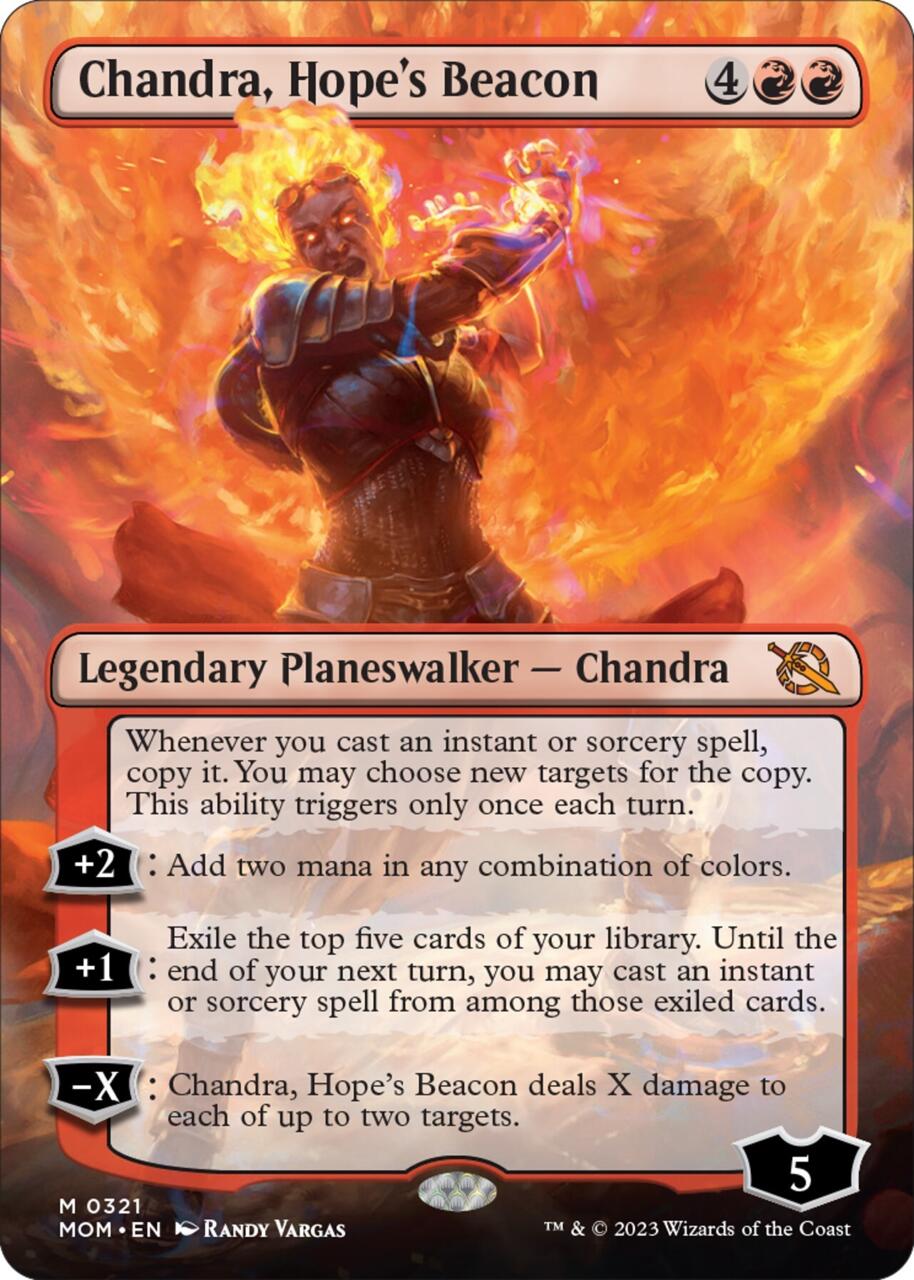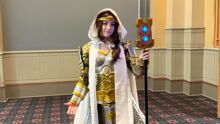Magic: The Gathering's March Of The Machine Sees Heroes Team Up To Fight The Phyrexians
The year-long story will reach its end next month.
After a year of setting up a battle through the multiverse, Wizards Of The Coast dropped the first details on the next Magic: The Gathering set, March Of The Machine, at MagicCon Philadelphia this past weekend.
March Of The Machine will mark the finale of the battle between the machine-being Phyrexians--who are attempting to take over the multiverse--and the heroes attempting to end their terror once and for all. Multiple preview cards were shown to the MagicCon crowd, including old favorites and new "team-up" cards with two characters together on one card.

The set will feature the Multiverse Legends "set within a set," which will show off heroes in the "Booster Fun" variants of their home world's featured sets, as well as five new commander decks that reintroduce Planechase, a mechanic not seen since the mid-2000s.
The panel also revealed March Of The Machine: Aftermath, a small 50-card mini expansion that will focus primarily on the end of the Phyrexian saga, specifically "which characters live, which ones get a happily ever after, and which ones don't live to see the aftermath themselves." Aftermath will be legal in Standard formats and sold physically in five-card packs.
Wizards Of The Coast also revealed the full schedule of events leading up to and immediately following the March Of The Machine set, which includes story reveals, prerelease events, more info on March Of The Machines: Aftermath. That schedule is as follows:
- March 16-19: March of the Machine story reveals
- March 29: Full set debut livestream, with a cinematic trailer and card previews
- March 29-April 4: Individual card previews
- April 5: Complete card image galleries will be revealed
- April 14-20: In-store prerelease events
- April 18: MTG Arena and Magic Online digital release
- April 21: Global tabletop release
- May 1: March of the Machine: The Aftermath story reveal
- May 2-3: March of the Machine: The Aftermath previews
To learn more about what went into making the set, we sat down with senior worldbuilding designer Emily Teng, lead game designer Dave Humphreys, and story lead Roy Graham after the MagicCon panel. We spoke about the creation of the team-up cards, including the process of representing both heroes mechanically on one card, and how the team figured out which teams made the most sense.
We also spoke about the differences between building a set around a major story event as opposed to building one around one of Magic's many planes, as well as when the 50-card mini-expansion Aftermath came to fruition.
This interview was conducted in-person after the March Of The Machines panel at MagicCon and edited for clarity.
GameSpot: During the panel, you mentioned how previous sets have focused on the planes themselves, while this one focuses on a major event in the story. Do you find that allows you to be a little more creative in your world building or card building, since you're not beholden to one particular place?
Emily Teng: It comes with its own freedoms and challenges. We have the challenge of making it feel like a really cohesive set, as we're dropping a bunch of planes in, and if we don't do anything special, it will just feel like a core set. On the flip side, it does give us the freedom to go to every plane we've been to before and pick and choose everything we think is cool.
Dave Humphreys: It's fun to have so much inspiration to pull from; being able to draw from anywhere is really powerful. It is challenging, at the same time, to try and figure out what the through-lines are, going back to the "core set" analogy." Beyond the story, even mechanically, we wanted this to stand out from a core set, so what do some planes have in common so that it makes sense that they're working together, separately on their own planes, in order to resist the Phyrexians. There are new challenges there, but overall it was certainly more fun.
Regarding team-ups, how much did the team enjoy the exercise of figuring out who should team with who, which team-ups work or don't work, etc.? As you said in the panel, a "vampire dinosaur" shouldn't work on paper, but it does!
Humphreys: It was tricky; we had some ideas and through those we had to figure out "are these characters both alive?" We had to go back into the story and see, as a lot of our characters have passed away off-screen or wherever else that I didn't know about. Sometimes someone would suggest a pair of characters, but I couldn't figure out how to get their mechanics to mesh, or I'd ask if we could do one red character over another red character, as I had an idea for the one I'd ask about but not the one originally suggested, and we'd switch.
We wanted to have a good representation of many different color pairs and combinations, so there was a lot of, for lack of a better term, "box-checking" where we made sure everything was represented. Also, these were a far bigger hit than I anticipated when the playtesters got the cards; I would ask what playtesters' favorite thing was, and so many people would call out those cards.
Teng: When we were first writing the art descriptions, we were very abstract: there's two people, they're fighting together, cool. However, as we started writing the full descriptions, that's where we got some of the best ideas. Yargle and Multani, for example, are a giant frog spirit and an elemental avatar; they could just be fighting together, sure, but what if Yargle was wearing Multani as armor? That's when we started thinking these were going to be crazy, and when the personality of the cards started to shine through.
Humphreys: It was a challenge for our art director too, I will say. The scale of some of these cards, Ghalta and Mavren for instance, had our art director like "you've really made some of this hard for me."
Getting into mechanics, how difficult was it to incorporate both characters featured on a card without making it completely game-breaking?
Humphreys: In terms of game balance, it wasn't really that hard. We refer to cards as having "knobs" or numbers you can change in order to affect the card's abilities. As I said in the panel, I was really stubborn about Ghalta and Mavren being a 12/12 [power and toughness], but ultimately we had options. We could have made it cost more mana to cast, we could have changed how the Vampire tokens worked, things like that. There are a lot of words on these cards, so there are a lot of "knobs" to change. We kept changing things until both the casual play design group and the competitive play design groups said "yup, this card is good for all of our formats."
March Of The Machines: Aftermath, the smaller story-focused set, is something Magic hasn't done in the past. Was this born from a need to bridge the gap between where this story ends and where the next story begins, or was it always in the plan that you would have a sort of supplemental "epilogue" set to the story?
Roy Graham: It was definitely later in the process, where we'd laid everything out and realized there was still a lot of moments that were untold and places that were left to visit. On the story team, even with 10 main stories and eight side stories, we felt like the things that were going to change in the multiverse needed a moment to breathe outside of the calamitous action of the main story.
Final question: all of the team-ups we saw in the preview were heroes, or characters fighting against the Phyrexians. Will there be team-up cards on the other side of the conflict as well?
Humphreys: I don't know if we should answer that or not.
Got a news tip or want to contact us directly? Email news@gamespot.com












































Join the conversation